“When many of the steel mills closed here in the 1980s and ’90s, some of the workers turned to construction and fabrication,” recounts Gerard Damiani, principal of Pittsburgh-based firm studio d’ARC. “They all built in peculiar ways because they were accustomed to heavy industry. This is something I have tried to leverage in my practice—expressing those methods and techniques.”
Perhaps that ethos is no more evident than in the Thorne Residence—a sprawling, low-slung house in Pittsburgh’s residential suburb of Sewickley Heights. Replete with nods to the region’s industrial legacy—from hot-dip galvanized steel to sooty charred-wood cladding—the 11,000-square-foot dwelling also makes use of actual artifacts from that bygone era: a historic Gothic-arch barn and a grain silo.
By the time current owners Karen and Henry Thorne acquired the property—a leftover parcel from the Fairacres estate once owned by steel magnate B.F. Jones, Jr.—both of those structures had fallen into disrepair. Notwithstanding a colony of bats, and a roof on the brink of collapse, the barn’s potential was apparent. To winterize it without wrecking the interiors, which featured impressive timber bowstring trusses, Damiani built up the exterior envelope by 8 inches and then reproduced the original exterior details. But to make the barn habitable—first as a temporary residence for the clients while work on the main house progressed, and then as a guesthouse and entertaining space—the architect inserted a kitchen, a suite of bedrooms, and a series of lofts inside the expansive volume.
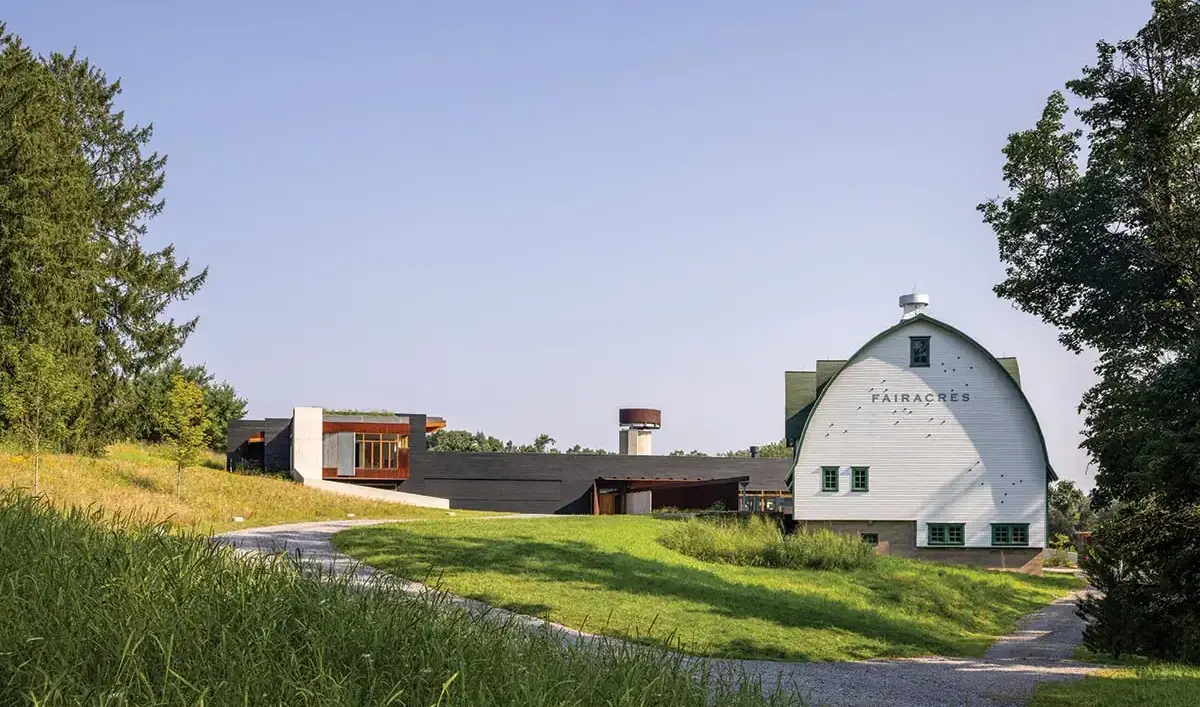
1
Emerald bottle-bottoms stipple the historic barn’s facade (1), while exposed bowstring trusses and rafters structure its roof (2). Photos © Paul Warchol, click to enlarge.

2
Damiani took a more playful tack with the stuccoed terra-cotta grain silo to the north. Inside the cylinder, a triangular staircase—lowered into it from above via a boom truck—spirals upward 30 feet to a west-facing observation deck frequented at sunset.
From the nearest street, only the barn’s roof and grain silo peek up above the hills. The main house, threaded between them, doesn’t come into focus until one advances up the curving driveway. On even closer inspection, the residence’s many idiosyncrasies emerge. Above the front door, for example, an inverted weathering-steel canopy directs rainwater into a 90-foot-long channel, which then empties into a funnel leading to a cascade of repurposed livestock troughs and into a stormwater-retention pond. Such imaginative details seem fitting for the clients (Henry is an inventor and entrepreneur, while Karen is an artist and former Ultimate Frisbee player).
Inside, exposed timber rafters rise and dip along a faceted ceiling, while muscular girders support their weight and that of the planted roof above them. The open-plan living area stretches eastward, bisecting an axis—etched into the ground with two mirrored water features—that visually connects the grain silo and the barn. A suspended fireplace, with a counterweighted cover, hangs in the center of the room, while a ramp (matching the incline of the one at Villa Savoye, Damiani points out) leads up to a secluded primary suite.
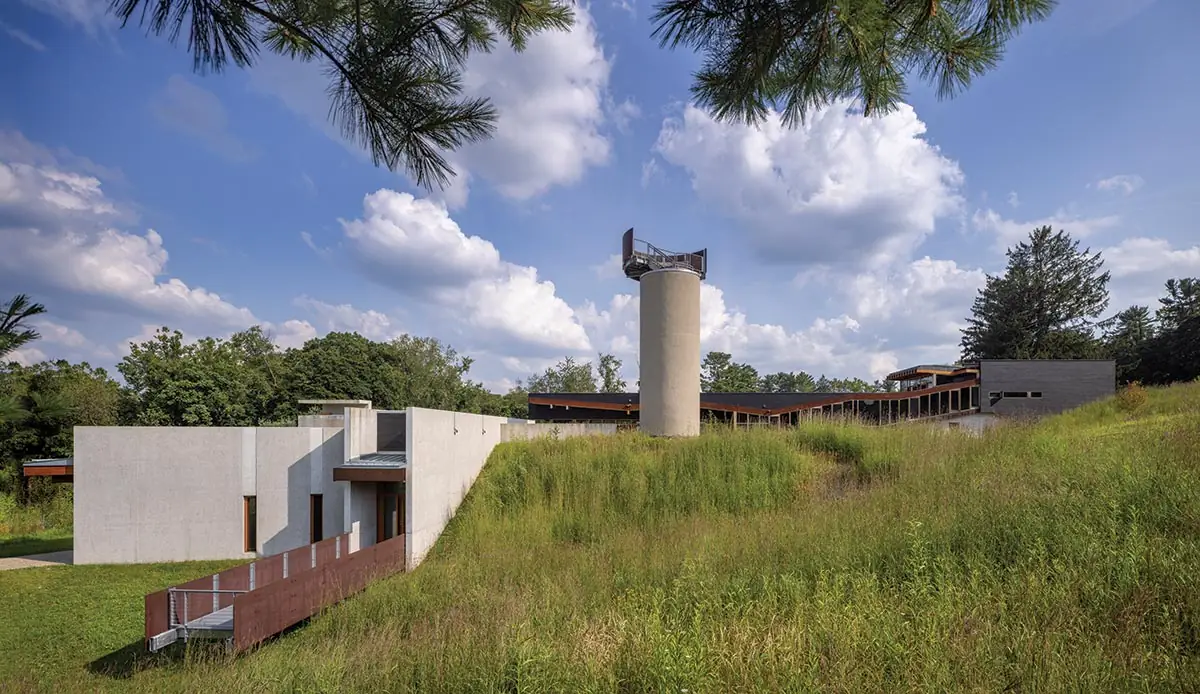
3
A ramp (3 & 4) leads up a hill to the primary suite (5). Photos © Paul Warchol
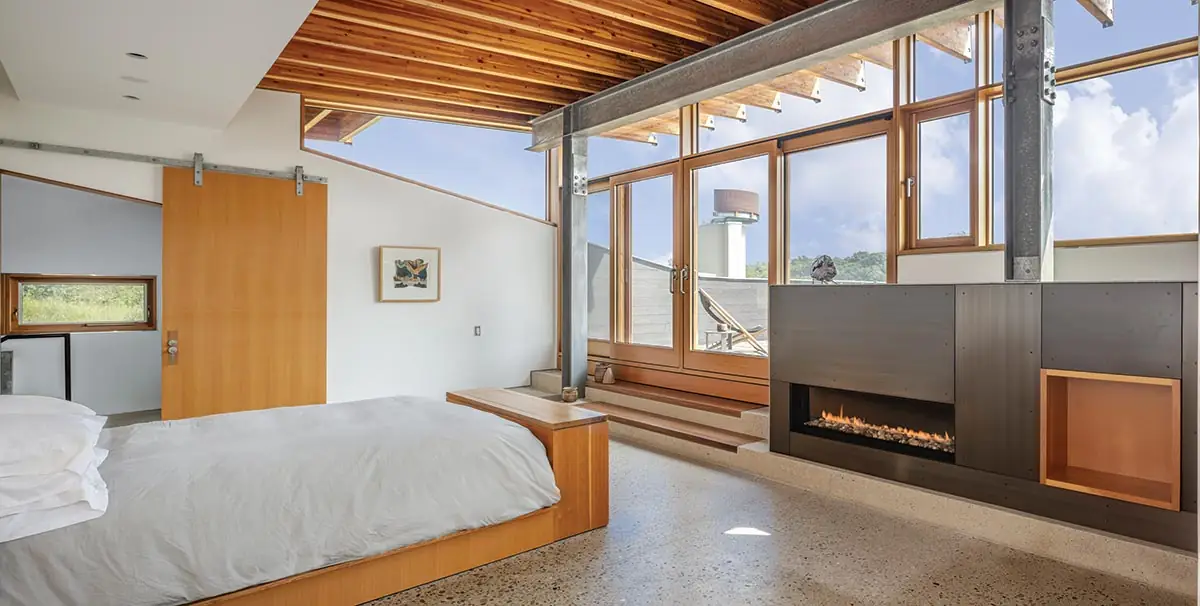
5
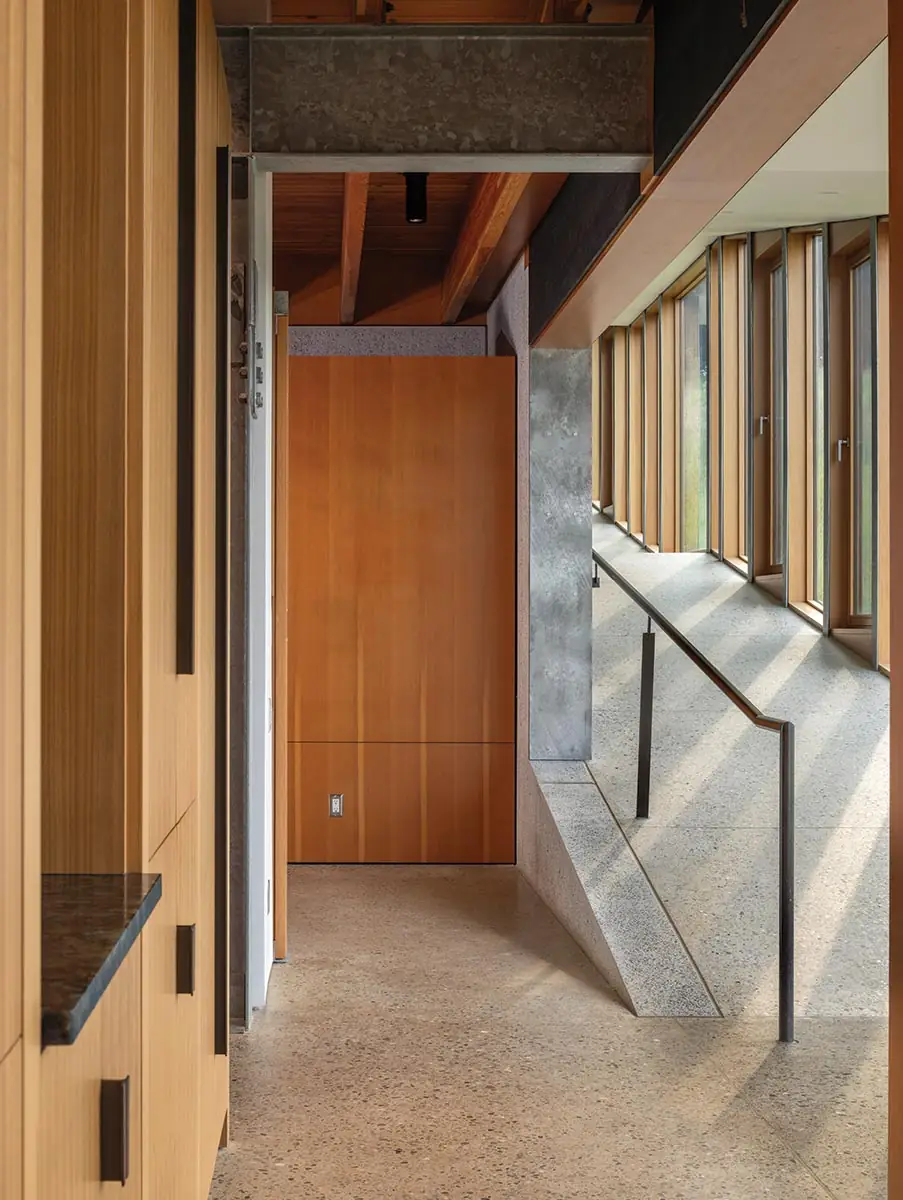
4
From the living area, a staircase leads down to an office and exercise room, as well as a string of guest-bedroom suites (for the clients’ adult children when they visit) nestled into a berm. In this wing, the tectonic language softens, offering a treat for the senses. Overhead, zigzagging skylights enable a deluge of daylight through repeating fir beams. Underfoot, waxed steel plates clang faintly with every footstep (the floor floats above a mechanical-system superhighway). At the long corridor’s end, a cantilevered balcony juts into the landscape to offer a space for solitude. But the real showstopper is the elegant treatment of the concrete walls.
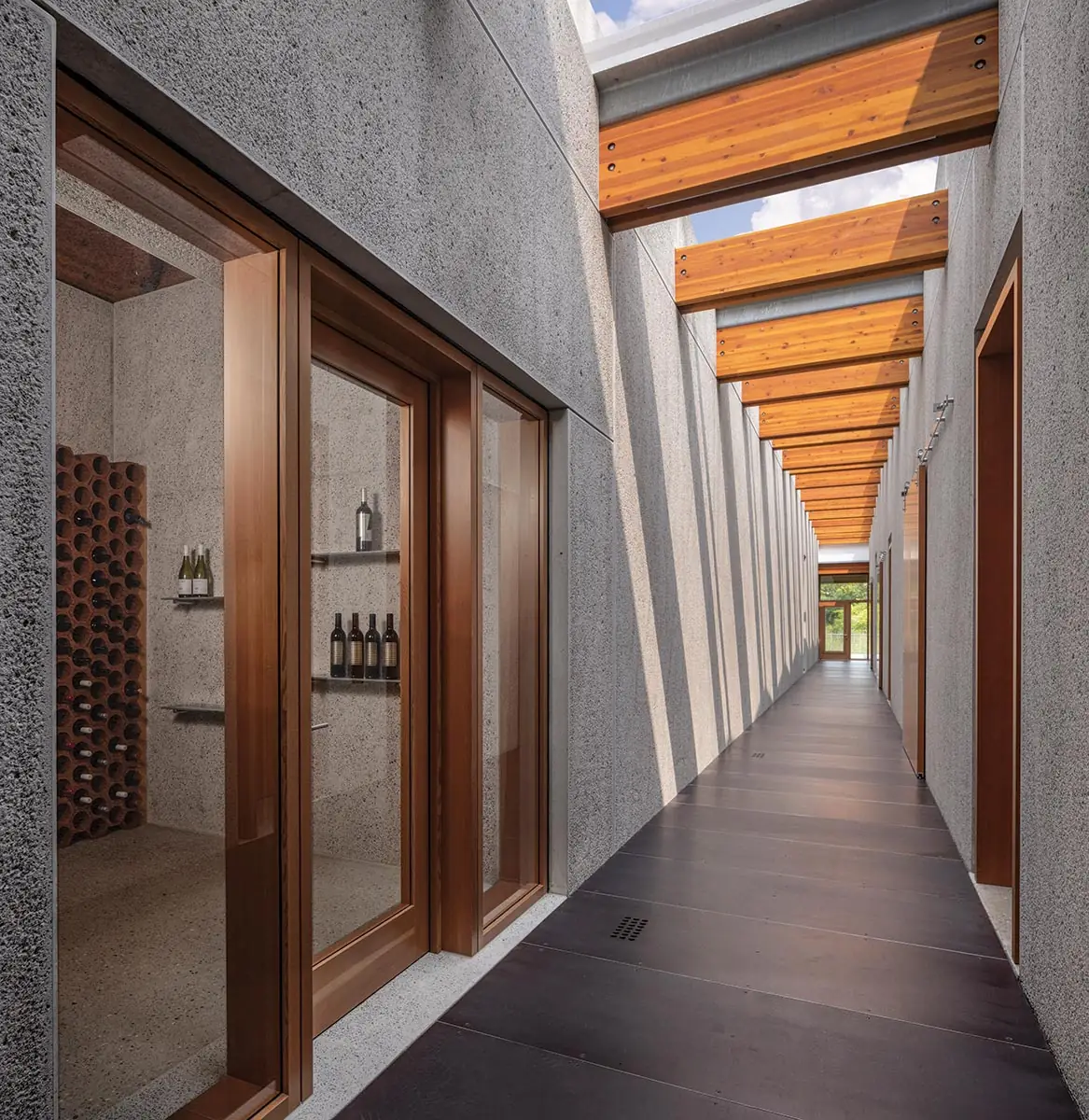
6
Douglas fir, and waxed steel feature in the guest wing (6 & 7). Photos © Paul Warchol
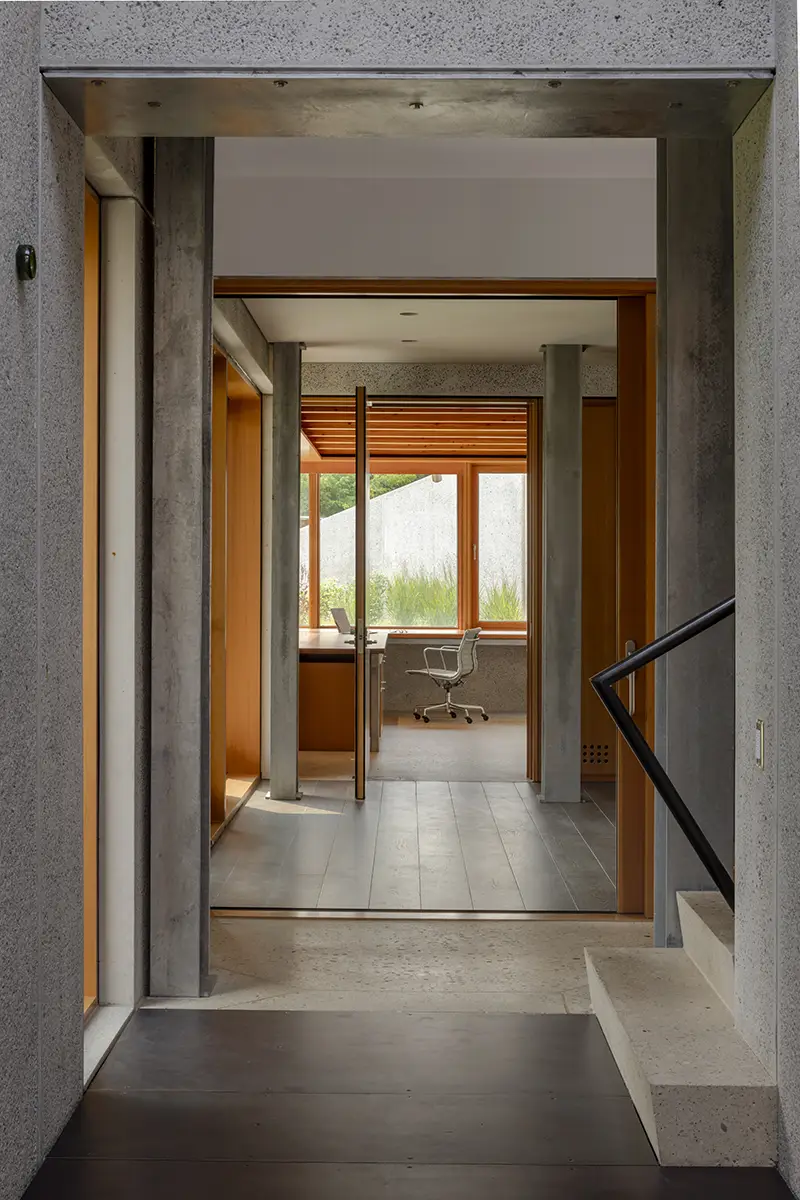
7
Damiani was particularly struck by the concrete base of the Henry Hornbostel–designed College of Fine Arts (1916) at Carnegie Mellon University, where he teaches. “It’s a really exceptional surface that has stood up to a century of abuse and neglect,” he says of his motivation to emulate it at the Thorne Residence. Damiani unearthed original specifications in the school’s archive, which included a recipe that called for white Portland cement and an aggregate of black Italian marble, as well as instructions detailing how the fresh surface should be treated (scoured, by hand, with a wire brush, so as to not dislodge stone chips) and finished (rubbed with a solution of hydrochloric acid two or three days later). With a laugh, Damiani recalls, “I thought, ‘That’s never going to happen.’”
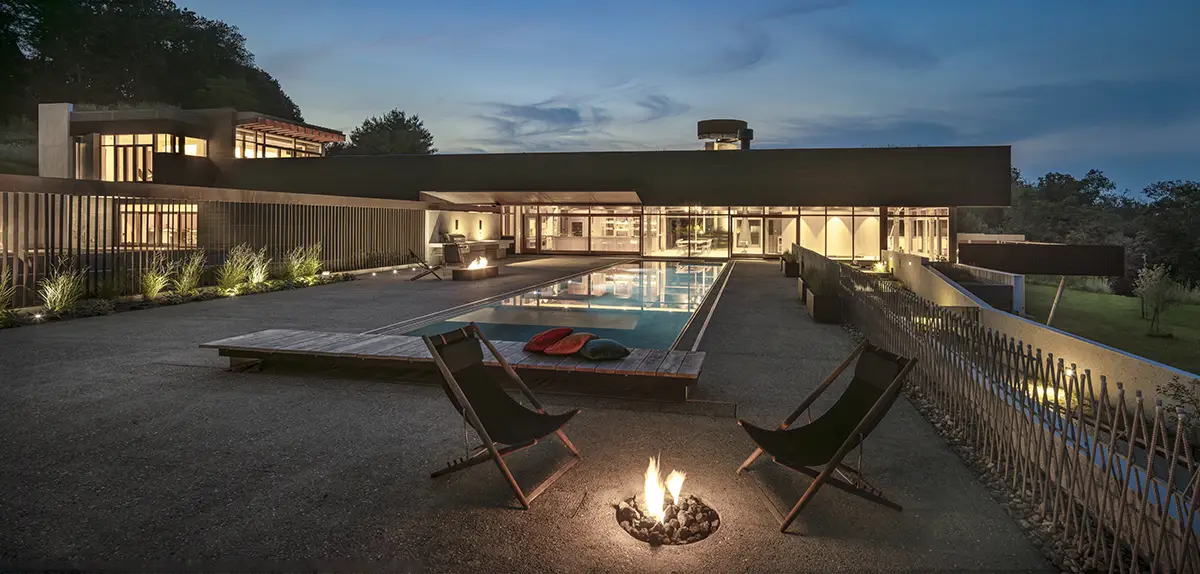
Photo © Paul Warchol
Intent on recreating a similar finish through other means, the architect embarked on a yearlong effort of trial and error that involved many mock-ups. He also enlisted the help of architectural-concrete specialist Peter Clarkson, a longtime collaborator of Tadao Ando’s on many of his North American projects, including the Eychaner House in Chicago and the Pulitzer Arts Foundation in St. Louis. White Portland cement, Clarkson explains, can be particularly challenging, because it sets quickly, and environmental conditions can easily affect its hue.
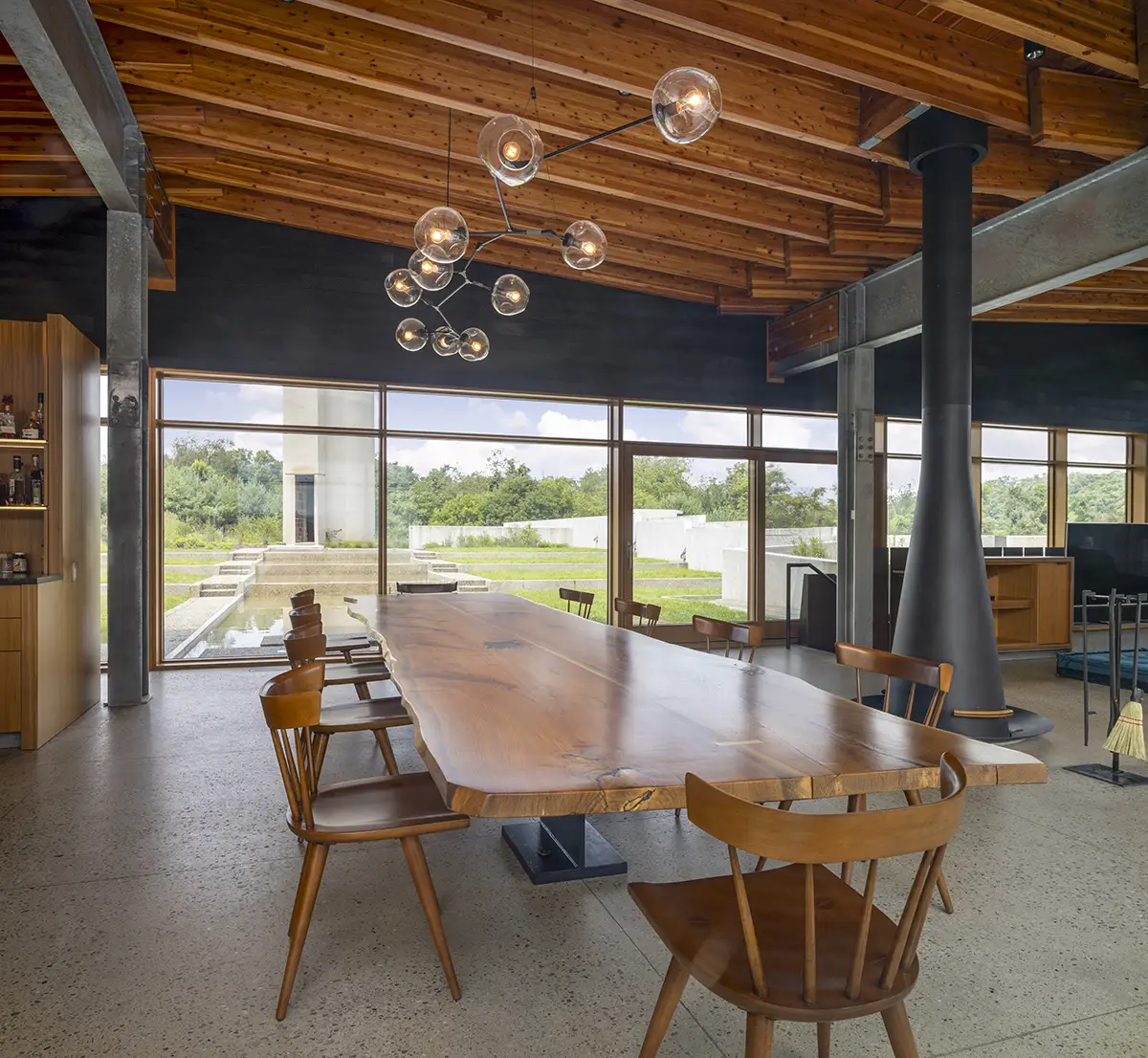
Photo © Paul Warchol
At the Thorne Residence, the concrete’s surface has been roughened to expose a dark limestone aggregate, but a silken ½-inch reveal abuts control and construction joints. Protecting these fragile borders from the brute force of bush hammers required developing custom tools, using a less harsh sponge jet near them, and careful execution. The walls in the wing comprise two layers separated by rigid insulation: an outer 10-inch-thick pour with rebar, and an inner 6-inch-thick slab that was reinforced with fiber to withstand mechanical vibration. The tiebacks, made of charcoal-colored fiberglass, all but disappear into the field of aggregate. “A lot of teamwork and coordination was involved,” Clarkson says, adding that his own specifications for the project required double the typical degree of precision. The refinement shows.
“I wanted to design a house that respected the landscape, the local history, and the traditions of this place,” Damiani says. The attitude is akin to the industrial mannerism of Hornbostel, whose own architectural palette routinely included found objects (gas fittings as handrails) and unconventional materials (refractory bricks for facades). The Thorne Residence celebrates, as Damiani contends, “what it means to build in Western Pennsylvania”—with plenty of space to gather with friends and family to boot.
Click plans to enlarge
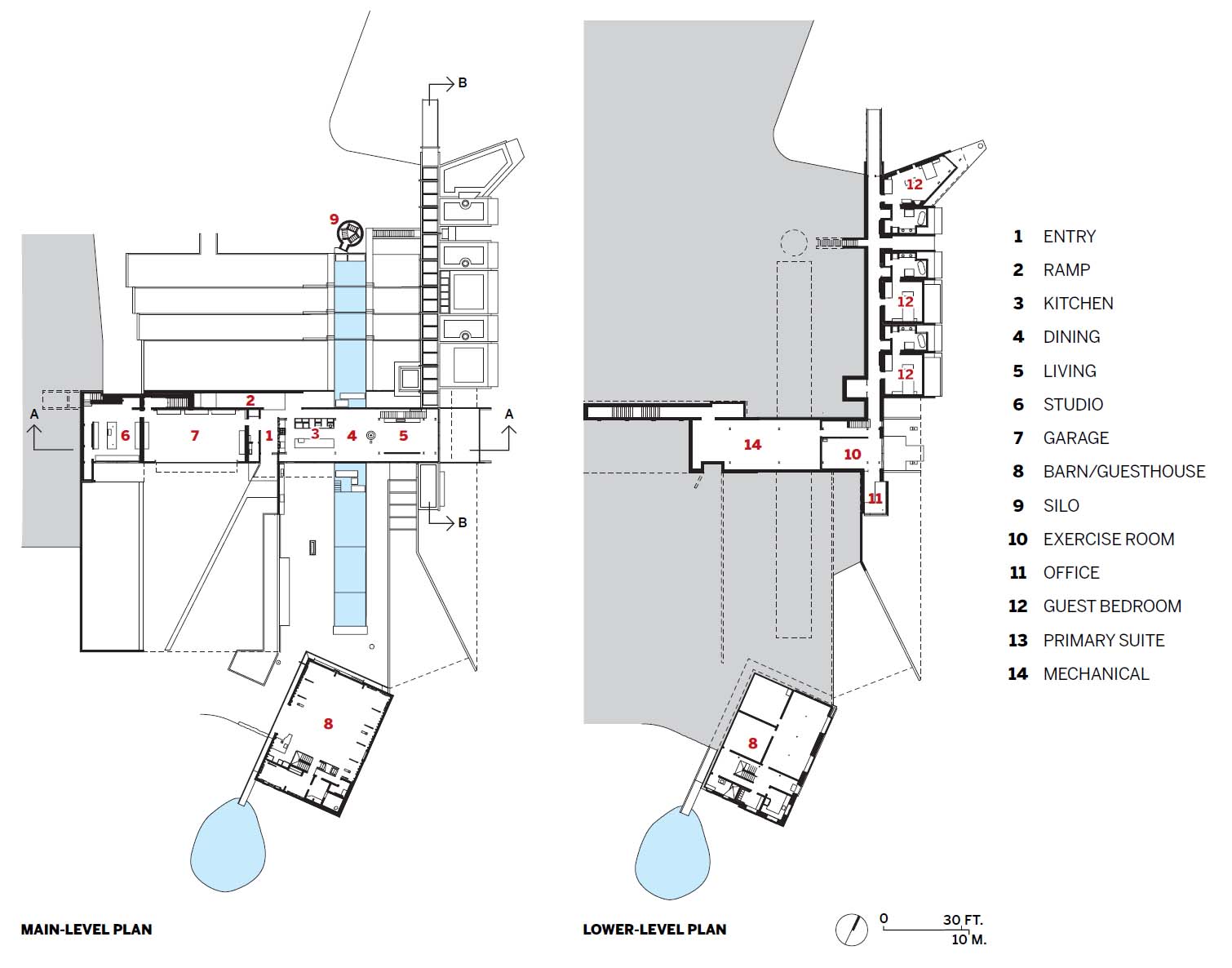
Click section to enlarge
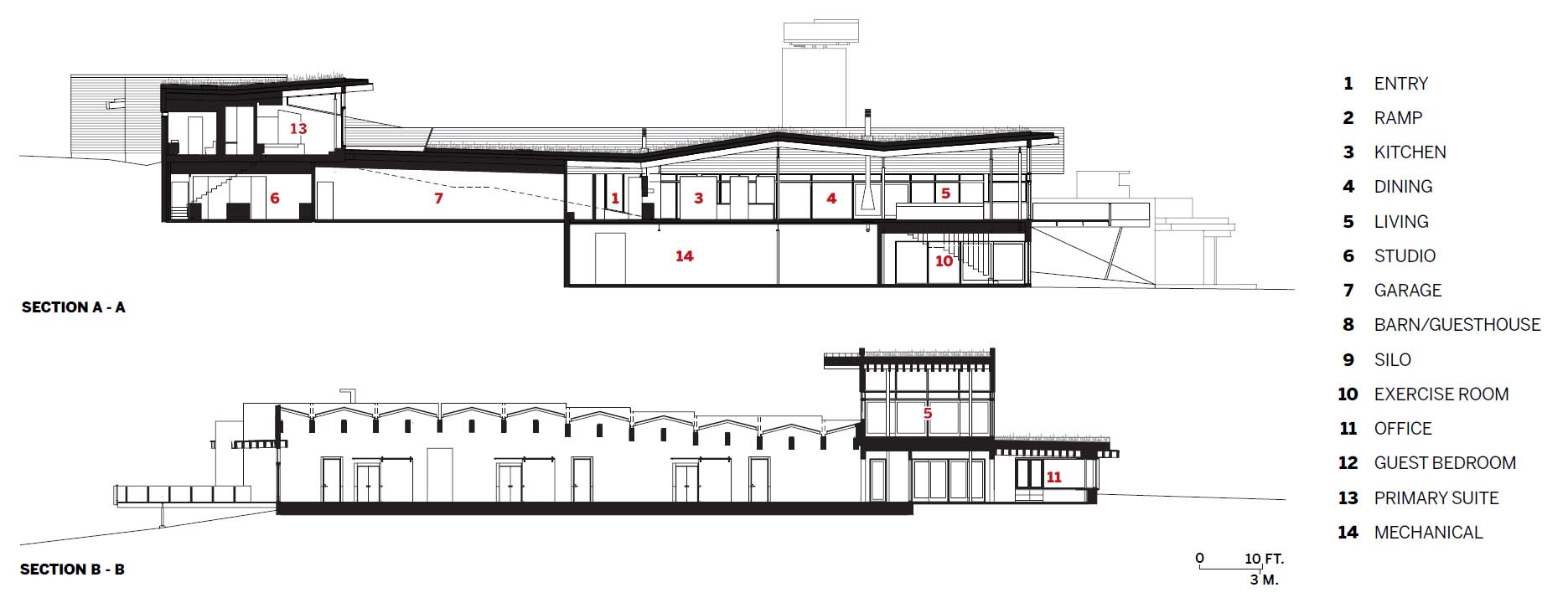
Credits
Architect:
studio d’ARC architects — Gerard Damiani, principal; Deborah Battistone, associate
Engineers: Konefal & Company (structural); Iams Consulting (m/e/p); Garvin Boward Beitko Engineering (geotechnical); Groundwork (civil)
Consultants:
Clarkson Consulting (architectural concrete); Waterline Studios (water feature); Pashek + MTR (landscape)
General Contractor: Sota Construction Services (barn, silo); Dick Building Company LLC (house), Rossman Hensley (house)
Client:
Karen and Henry Thorne
Size:
16,000 square feet (new and renovated)
Cost:
Withheld
Completion Date:
May 2023
Sources
Cladding:
Delta Millworks
Roofing:
American Hydrotech
Windows:
Grabill Windows and Doors, Duratherm Window Company (wood frame); Super Sky Products (sloped glazing)
Doors:
Schweiss Doors
Hardware:
FSB North America
Lighting:
Lindsey Adelman Studio




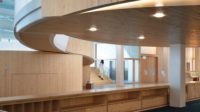

Post a comment to this article
Report Abusive Comment